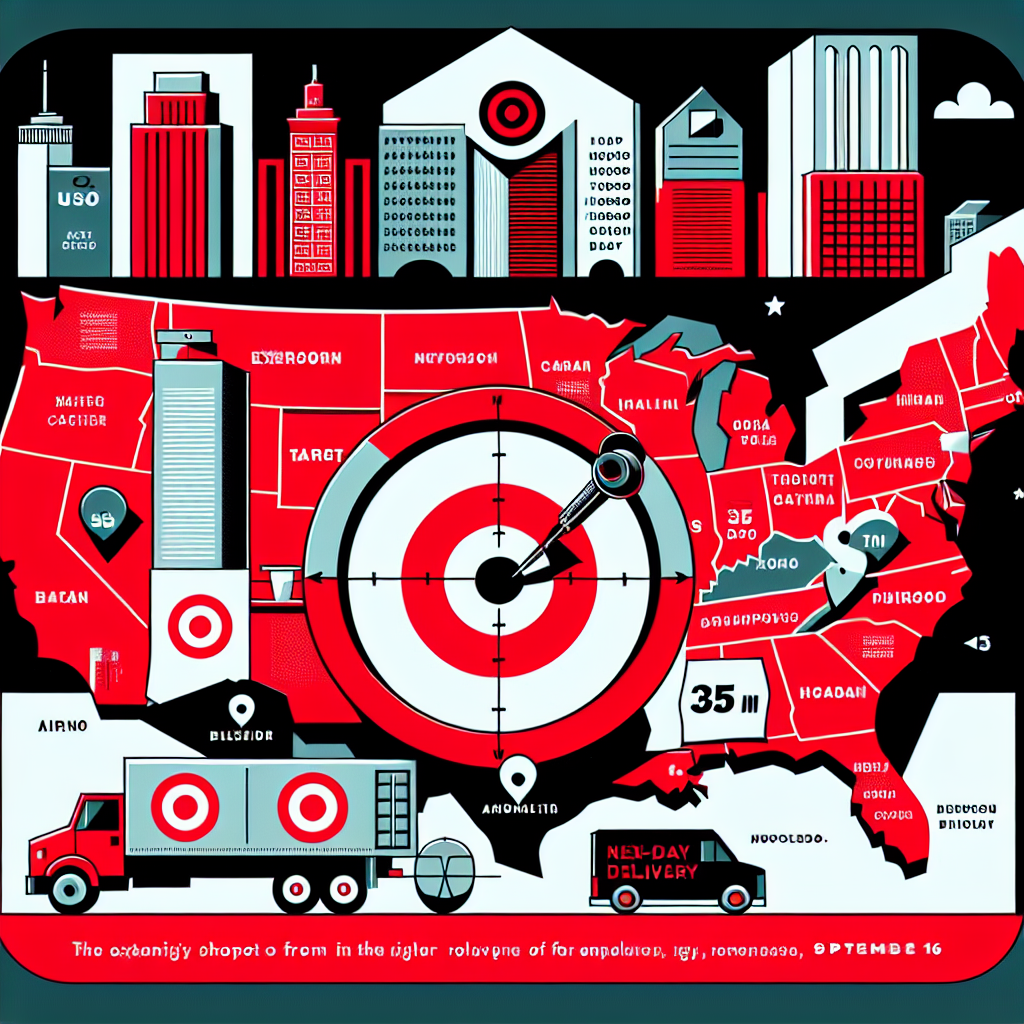Last Tuesday, September 16, US retailer Target announced on its official website that it will expand its next-day delivery service for online orders to 35 major metropolitan areas in the United States to enhance competition with retail giants like Walmart and Amazon.
Target stated that this faster service will be launched at the end of October in cities such as Cleveland, Orlando in Florida, and Pittsburgh to meet the shopping peak season by the end of the year.
Ranked eighth in the US, the retail giant plans to expand the next-day delivery service to over twenty new areas next year and continue to revamp its stores to turn them into “mini distribution centers.”
If consumers are Target Circle 360 members or use a Target Circle card to shop, orders over $35 can enjoy free next-day delivery service, with no minimum order amount for online shopping. The company mentioned that about 85% of the items sold in physical stores are applicable to this service.
The announcement also stated that the same-day delivery service covers 80% of the US population, while the two-day delivery service covers 99% of the population.
Gretchen McCarthy, Executive Vice President and Chief Supply Chain and Logistics Officer of the company, mentioned that the number of next-day delivery packages in the second quarter increased by over 2 million compared to the same period last year.
In comparison, Amazon delivered over 90 million same-day or next-day packages last year and provided same-day delivery service in 140 metropolitan areas, while Walmart stated that its same-day or next-day delivery service covers 95% of the US population, with a total of 71 million packages shipped last year.
Target’s logistics model utilizes stores as distribution centers. The company stated that this approach can improve efficiency and reduce costs. After orders are picked up from local stores, they are sent to 11 sorting centers and then delivered to local communities by the company’s subsidiary, Shipt (Target’s delivery company), or third-party carriers. Each sorting center serves 30 to 40 stores, with orders allocated based on factors such as inventory, manpower, and cost.
Target mentioned that removing the sorting and packaging processes from store warehouses can save time and space for the stores, allowing them more time to handle in-store pickups and Drive Up orders.
Shipt relies on independent drivers who choose tasks through an app and use their vehicles for residential delivery.
In a Q&A article, McCarthy stated: “In regions where customer demand for delivery is higher or continually growing, we evaluate the density of stores and supply chains to enable next-day delivery in an economically efficient manner. This is crucial for the profitability of our digital business.”
She added that advancements in route planning and forecasting technology have allowed the order deadline for customers to be extended. The “order time” in most markets has been extended to 3 p.m. local time, and in some areas, it goes up to 6 p.m.
Most of the two thousand Target stores offer pickup and drive-up services for customers.
After testing next-day delivery service in Chicago, Target streamlined the shipping functions of some stores, consolidating them at specific stores and sorting centers. The results showed an almost one-day increase in delivery speed, a five-fold increase in next-day delivery satisfaction rate, and a significant reduction in local delivery costs. McCarthy mentioned that Chicago has now become one of the lowest-cost delivery markets in the US, and stores that no longer offer delivery have generally exceeded summer sales expectations.
Target stated that it will continue to adjust its strategies based on market demands in the future to ensure faster and more cost-effective services.

